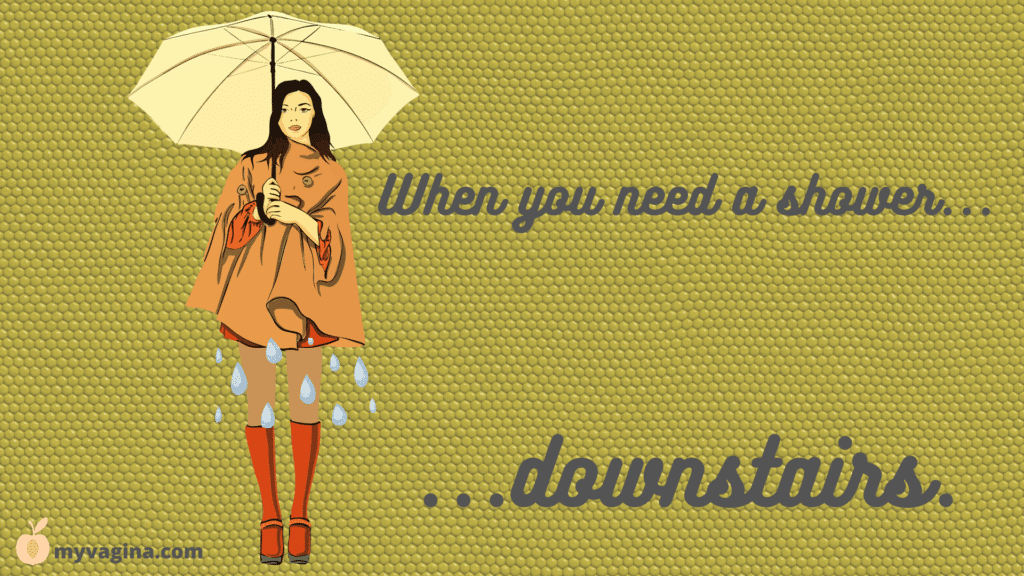Douching means rinsing your vagina with some sort of liquid, then letting it run out of your vagina. The point is that the vaginal walls are rinsed with the liquid, and treatment is applied this way.
IMPORTANT NOTE ON DOUCHING:
If it ain’t broke, don’t fix it!
If you don’t have any issues that you know of, do not douche, ever. If you are treating a problem, get good advice from a practitioner before you douche, since you could make the problem worse.
Not all douching is bad news, but if you don’t know what you’re doing, don’t douche. When you do douche, be extremely judicious – often, less is more.
Your ultimate goal is to achieve vaginal balance and that cannot be achieved with constant douching.
What to use as a douche apparatus
You’ll need a douching device, which can be a silicone douche apparatus (buy online), a turkey baster or a large syringe canister (200ml). A silicone douche apparatus is the best because it’s soft silicone, as opposed to hard plastic. You can buy these online or ask at your local pharmacy.
Get your liquid and clean douche apparatus ready, and a towel or facecloth in case of spills. You’ll need to dry yourself afterwards, and some liquid may drip out of you over the next couple of hours so dress accordingly.
Not sure what a douche looks like? Look up silicone vaginal douche image search to see what you’re looking for. Make sure you don’t get an anal douche since the shape can be different. Sometimes they are the same, but you want one designed for vaginas.
Where to douche
You can douche comfortably sitting on a toilet, but just be sure to keep the apparatus from touching the toilet. You don’t want to introduce toilet germs to your vagina.
You can also douche in the shower or bath.
Make sure you have some privacy to douche. It doesn’t take long, but it’s a little compromising in terms of someone barging in on you mid-douche.
How to douche
Suck the liquid into the douche apparatus. Insert the device into your vagina, as far as you can but without hurting yourself or hitting your cervix.
The depth of the vagina differs between vaginas, so use your body as a guide and feel when it has reached the end of your vagina/your cervix, and draw the device a little bit so it’s not touching your cervix.
Squirt the liquid into your vagina and then let it run out. Do this until your dose of liquid is used up.
Wash your douche apparatus in hot water and allow to air dry after each use.
Tips and tricks for douching
- Use a little lube on your device or vulva/vagina if your vagina is dry.
- If the douche is irritating, stop using it and try another delivery method.
- If you struggle to get into the right position, you may need to try another position or try a different delivery method.
- Don’t douche for no reason – you need your healthy flora to stay put, not be washed out by douching.
- Use douches judiciously and as prescribed by whatever instructions you are following. Do not overdo it! You are using a douche as a tool, and more is not better.
- Work with your body, not against it. Never force a douche into your vagina. If you are uncomfortable using a douche, practise, and be gentle!
- If you hate it, don’t do it.






